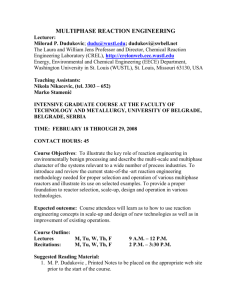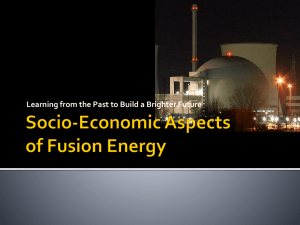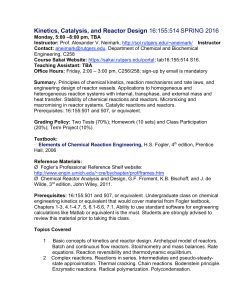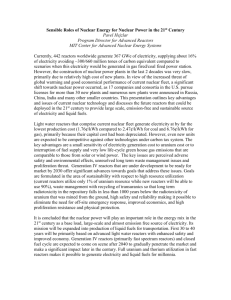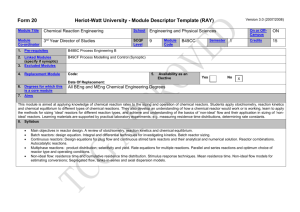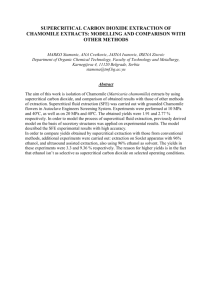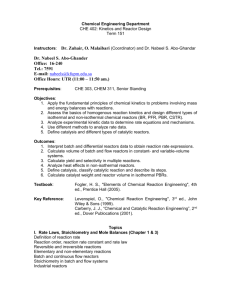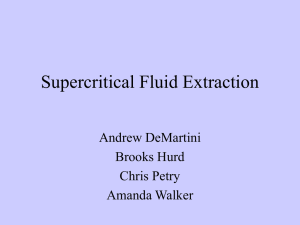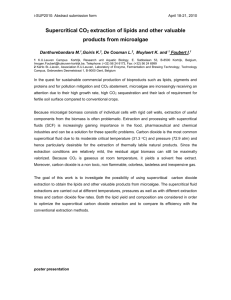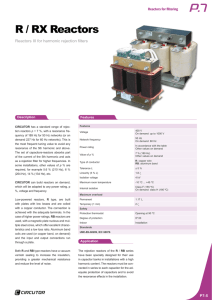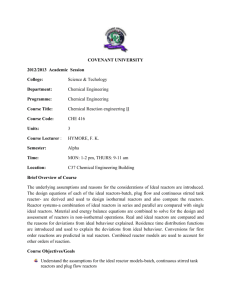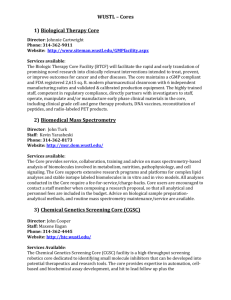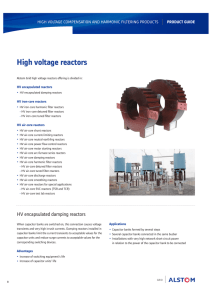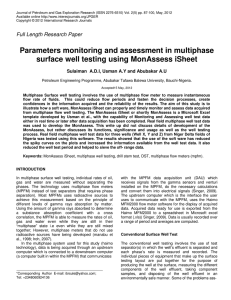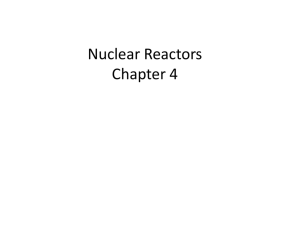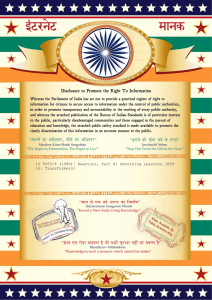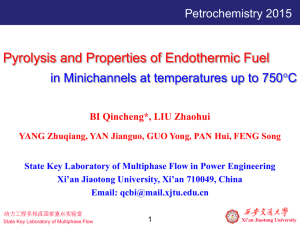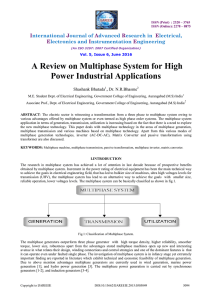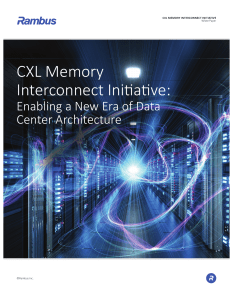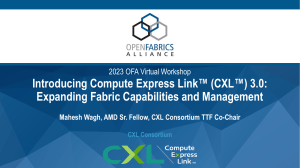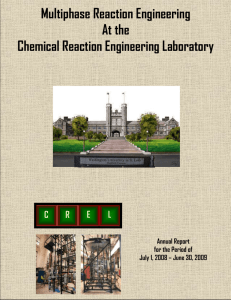In-Situ, Fiber Optic Measurement Techniques in Multiphase Reactors
advertisement
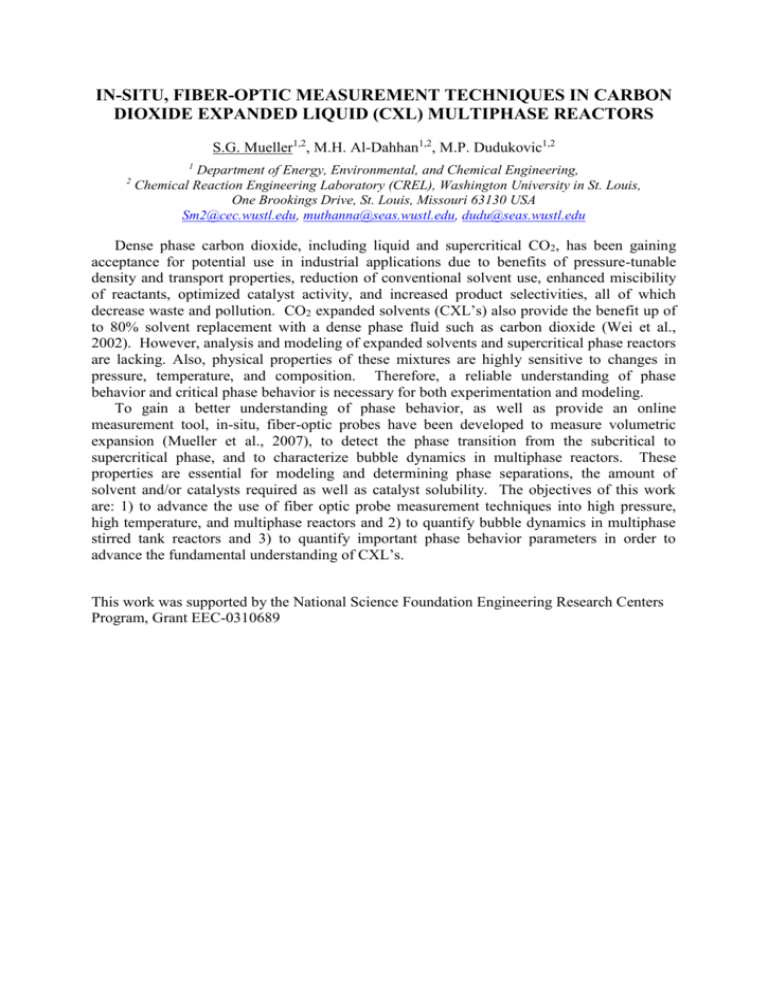
IN-SITU, FIBER-OPTIC MEASUREMENT TECHNIQUES IN CARBON DIOXIDE EXPANDED LIQUID (CXL) MULTIPHASE REACTORS S.G. Mueller1,2, M.H. Al-Dahhan1,2, M.P. Dudukovic1,2 1 2 Department of Energy, Environmental, and Chemical Engineering, Chemical Reaction Engineering Laboratory (CREL), Washington University in St. Louis, One Brookings Drive, St. Louis, Missouri 63130 USA Sm2@cec.wustl.edu, muthanna@seas.wustl.edu, dudu@seas.wustl.edu Dense phase carbon dioxide, including liquid and supercritical CO2, has been gaining acceptance for potential use in industrial applications due to benefits of pressure-tunable density and transport properties, reduction of conventional solvent use, enhanced miscibility of reactants, optimized catalyst activity, and increased product selectivities, all of which decrease waste and pollution. CO2 expanded solvents (CXL’s) also provide the benefit up of to 80% solvent replacement with a dense phase fluid such as carbon dioxide (Wei et al., 2002). However, analysis and modeling of expanded solvents and supercritical phase reactors are lacking. Also, physical properties of these mixtures are highly sensitive to changes in pressure, temperature, and composition. Therefore, a reliable understanding of phase behavior and critical phase behavior is necessary for both experimentation and modeling. To gain a better understanding of phase behavior, as well as provide an online measurement tool, in-situ, fiber-optic probes have been developed to measure volumetric expansion (Mueller et al., 2007), to detect the phase transition from the subcritical to supercritical phase, and to characterize bubble dynamics in multiphase reactors. These properties are essential for modeling and determining phase separations, the amount of solvent and/or catalysts required as well as catalyst solubility. The objectives of this work are: 1) to advance the use of fiber optic probe measurement techniques into high pressure, high temperature, and multiphase reactors and 2) to quantify bubble dynamics in multiphase stirred tank reactors and 3) to quantify important phase behavior parameters in order to advance the fundamental understanding of CXL’s. This work was supported by the National Science Foundation Engineering Research Centers Program, Grant EEC-0310689
